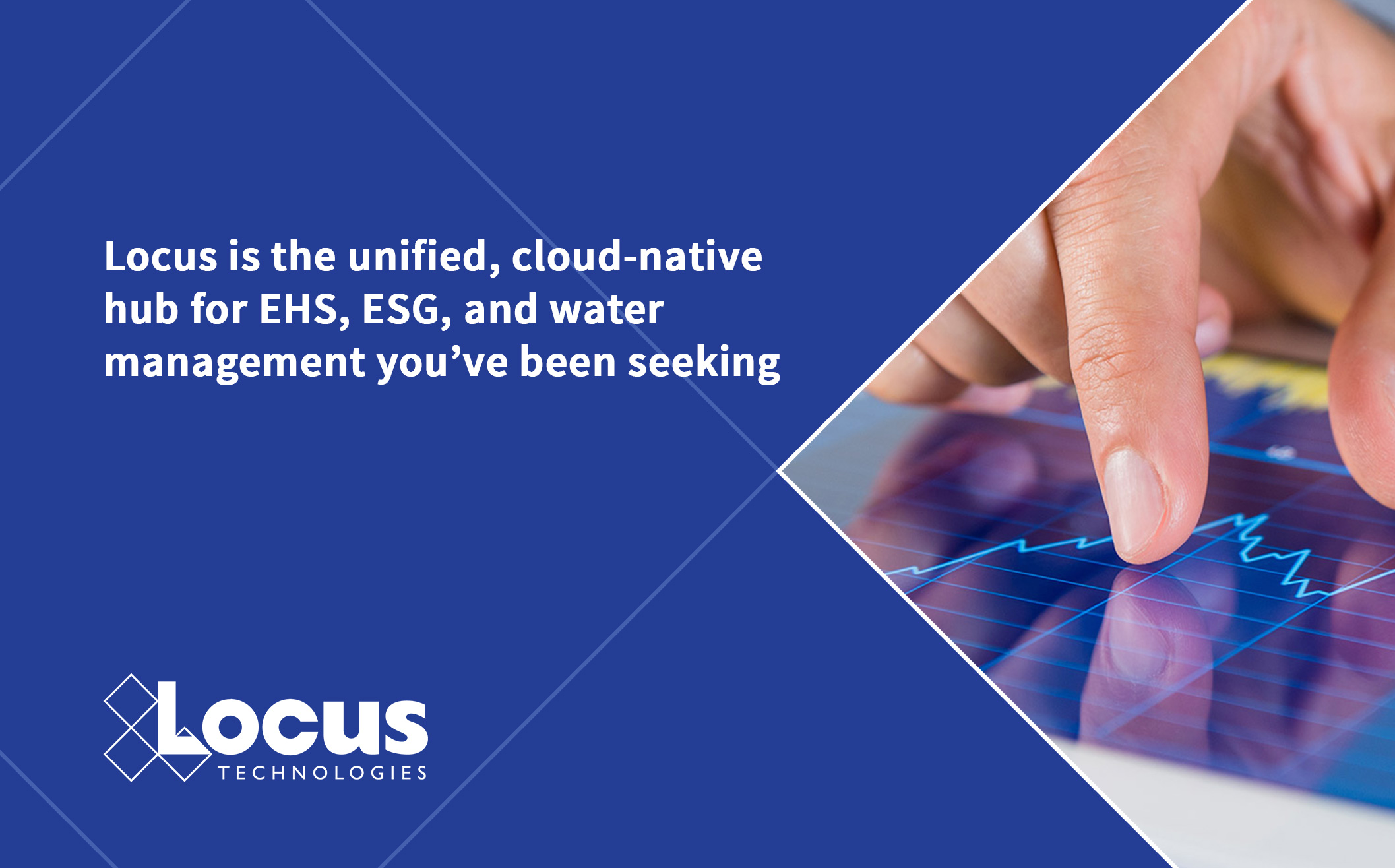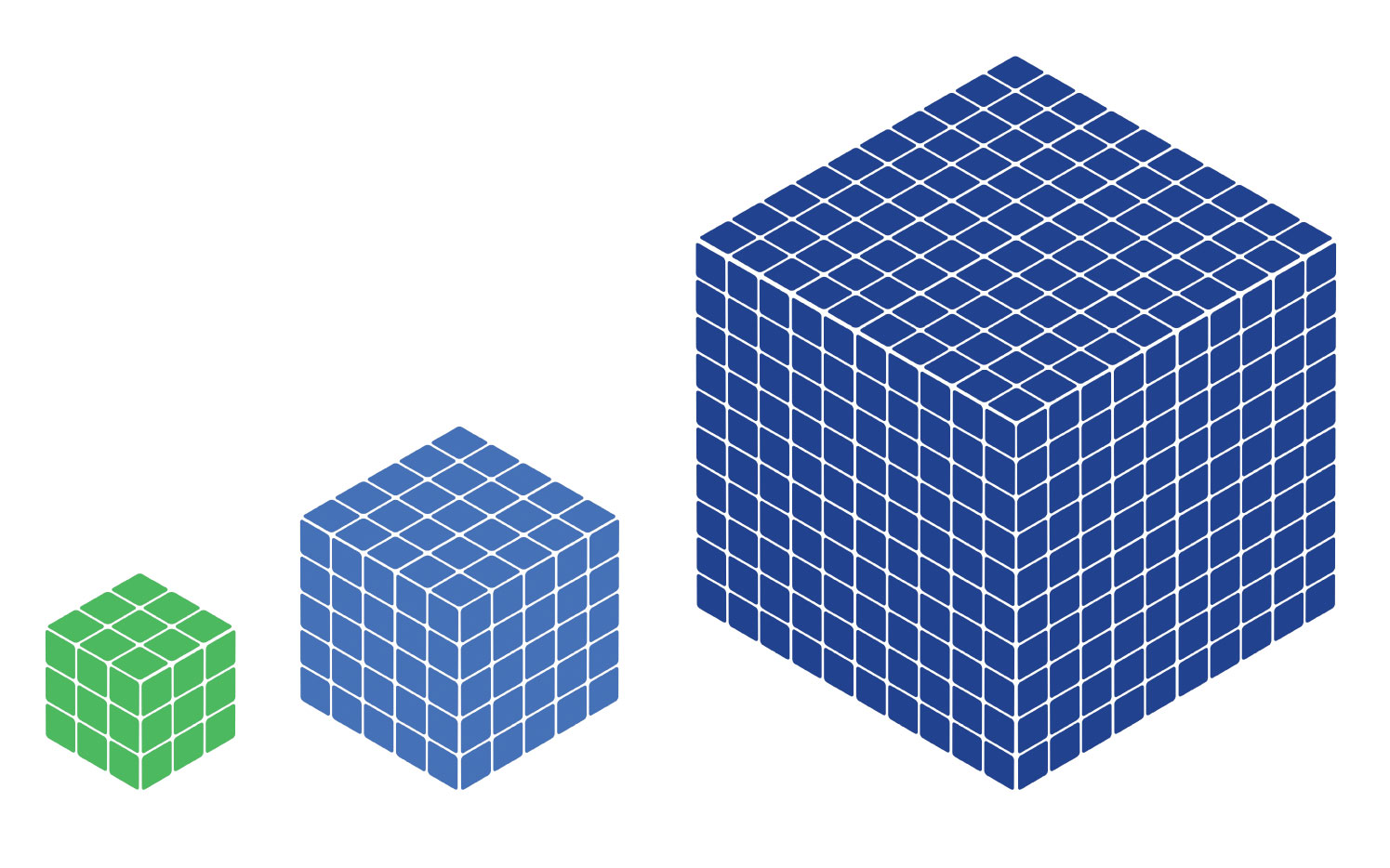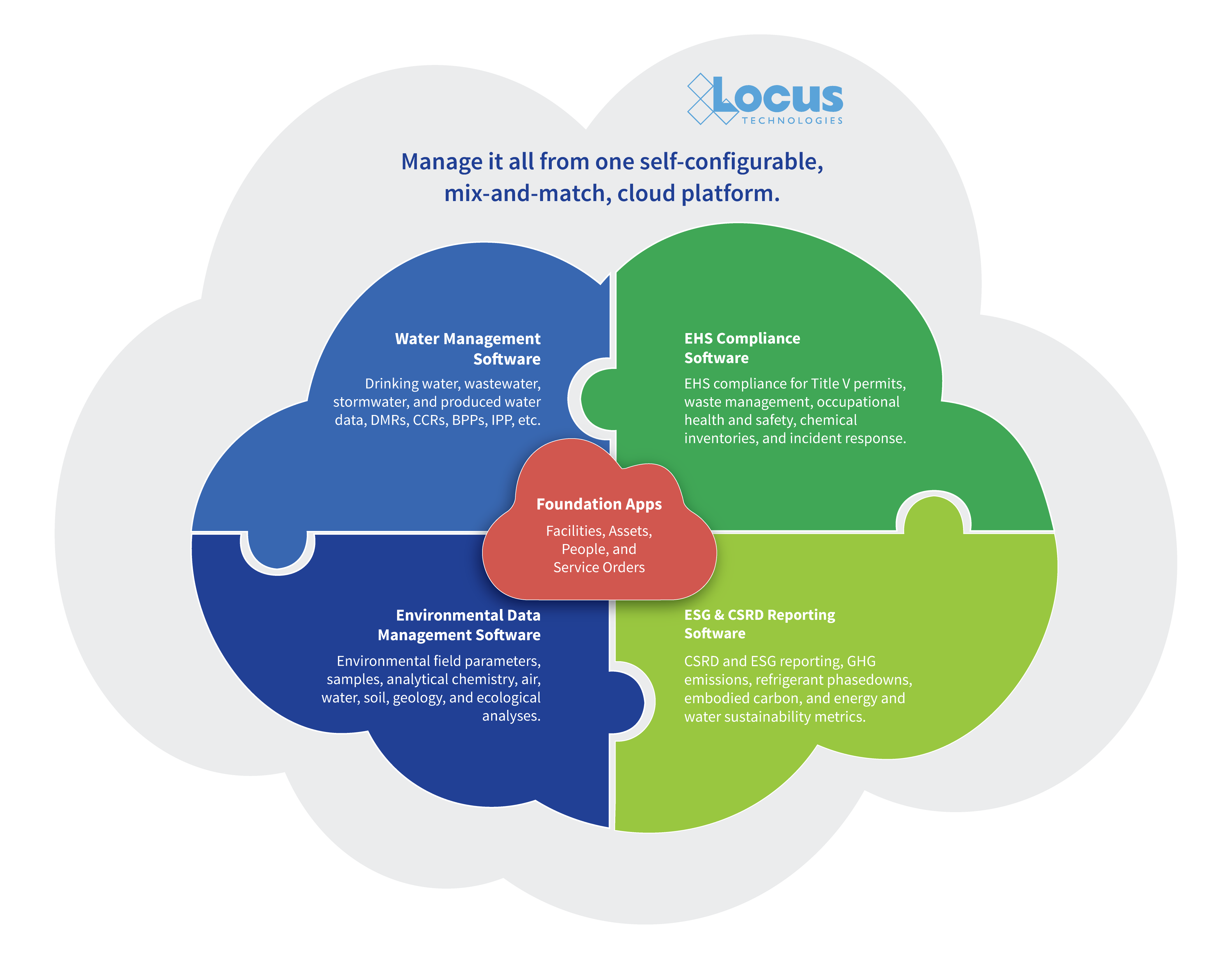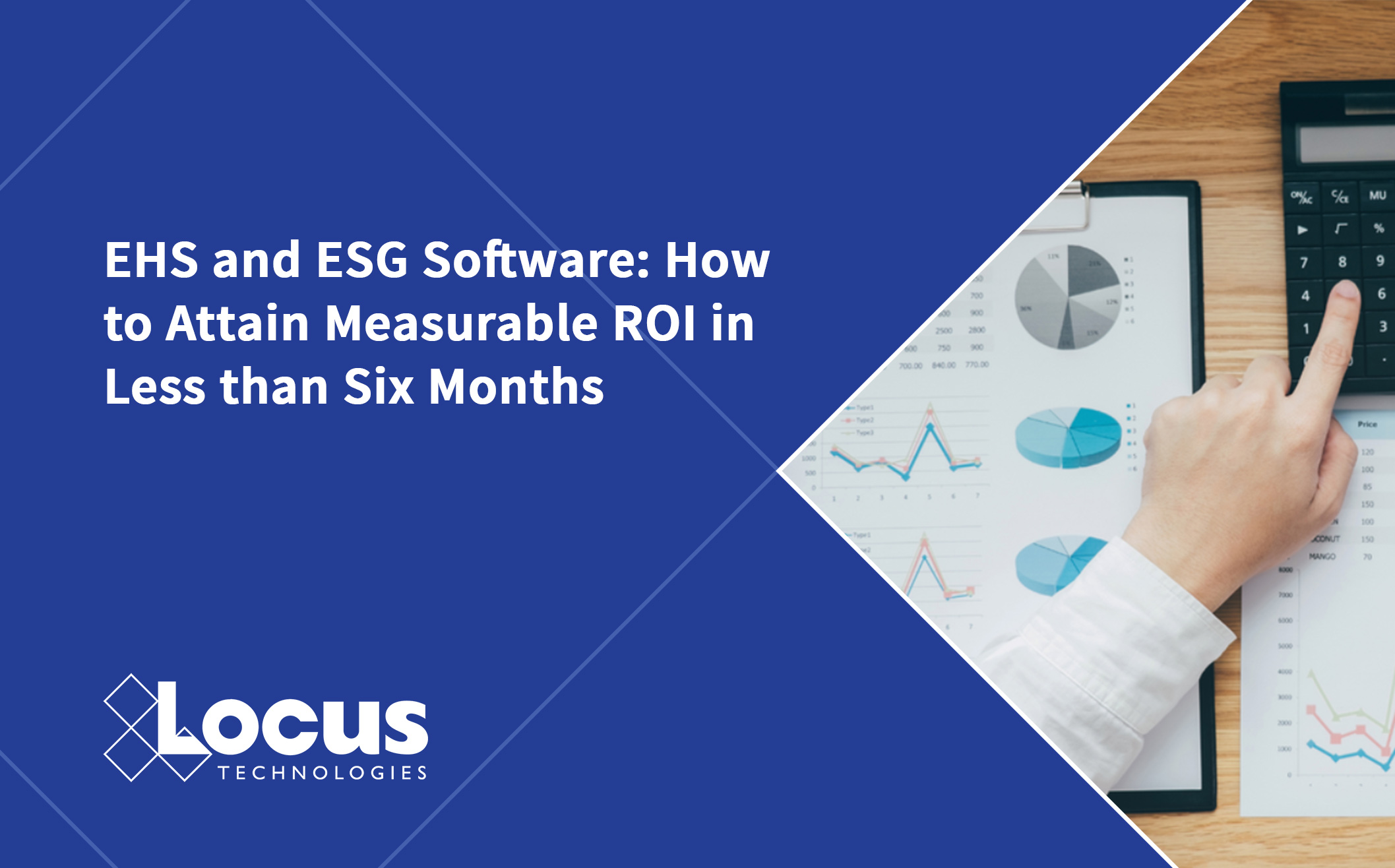
Reading Time: 6 minutes
Unicorn. White whale. Holy grail. A truly unified cloud-native platform for EHS, ESG, and water management may seem mythical—but it’s real, and it’s right here. Locus has been hiding in plain sight in Silicon Valley since 1997.
While competitors have prioritized advertising over innovation, we’ve been heads down, investing in talent and tech. The outcome is Locus becoming the only (or one of few) unified, cloud-native platforms in this space. While other vendors may masquerade as us, here are some ways to identify a “real” unicorn when you see one.
The difference between aggregated platforms and integrated platforms
The EHS and ESG software markets have become hot targets for private equity and vendor consolidation. The result of these mergers and acquisitions is that multiple standalone software products are aggregated under one roll-up brand. While the distinct products carry the same new logo, their underlying code and architecture remain wholly disconnected. Some brands give the illusion of integration among the acquired products by building a home screen with links to access each silo. But that false front does nothing to integrate the functionality or data behind it. It is just a veneer on the particle board.
A truly integrated platform like Locus means that every application (e.g. air permits, GHG tracking, refrigerant gases, waste and chemical management, ESG, water metrics) share the same software architecture (the same language), enabling them to “speak” to one another. For example, your Title V permits and RCRA obligations may share common subsets of data, such as facilities, contractors, and warehouse coordinates. With an integrated platform like Locus, those values are shared in the software, too. Furthermore, those applications all sit on the same Locus Platform to ensure continuity and accelerated user adoption for inter-department functionality such as GIS, workflow, analytics, integrations, and reporting that transcend each application.
The importance of unified data capture
Entering data once and leveraging it across multiple use cases, such as compliance and sustainability, dramatically boosts productivity while improving quality. This becomes abundantly clear in the context of California SB 253 and SB 261 where data disclosures that were once voluntary will become mandatory for companies doing business in that state. Similar state laws are in the works elsewhere, so there will be an increasing burden on companies to unify data from disparate sources (including Scope 3), process it (hopefully only once), and report it multiple times.
That’s a great segue to the critical importance of API integrations and Internet of Things (IoT) connections. They can add tremendous value to a unified platform or severely complicate an aggregated one.
Imagine you’ve purchased a roll-up platform without realizing it was an aggregator and not an integrator. Your EHS, ESG, and water data is now distributed across multiple silos (one silo for each acquired product), unable to interact. Your data is further convoluted if different products are used in different jurisdictions. Your GHG monitors may pump real-time data into a different silo for each facility. Your field teams may add incident data to their own system. Then you use APIs to connect some silos to third-party data sources – like your ERP system, CRM, SCADA, labs, etc. Since your business operates in California, the matrix will become exponentially more complex as you collect inconsistent data types from suppliers. It’s impossible to efficiently and effectively manage EHS compliance and ESG reporting in that environment, let alone capitalize on AI.


As the only independent developer of a unified, cloud-native platform for EHS, ESG, and water, Locus collects all customer data once, centralizes it in our multitenant cloud, and makes it available to every Locus application our customers choose to use across every jurisdiction. Connecting IoT devices and 3rd party data enriches the data and fosters an interoperable solution, not more complexity. And when it’s time for mandatory Scope 3 disclosures, built-in supply chain surveys streamline data collection and help to standardize the broad data.
The role of data verification and validation
In the imaginary scenario above, what if there were inaccuracies in your data? In some silos the value might be correct. In other silos, the values are off. Without a unified platform, not only is it unrealistic to prevent those inconsistencies, but it’s also impossible to spot them after the fact. This compromises the accuracy and confidence in any downstream report. With Locus, data is automatically verified and validated as it enters the system, regardless of its source (API, EDD, SCADA, etc.).
Why multi-site scalability matters for EHS and ESG
A truly unified platform like Locus not only integrates data across practice areas (EHS, ESG, water management, etc.), but it centralizes data across locations. Locus Platform is a Microsoft SQL database running in a secure, multitenant, iOS-compatible AWS cloud. This structure enables our clients to gain uninterrupted access to the latest functionality every day, so all customers are singing from the same hymn sheet. In other words, your Burbank air permit team and your Brisbane waste management team are using the same platform. It also means the Locus solution easily scales to fit the smallest water utility and the largest chemical manufacturer. If you need to rapidly deploy a unified platform, Locus’s out-of-the-box SaaS offering is the ideal choice.
Are unified platforms for EHS and ESG easily configurable?
One of the hallmarks of a truly unified platform is its adaptability to complicated and unforeseen needs. In the case of Locus Technologies, the software was engineered to unite metadata-driven, purpose-built apps in one platform. This means that any combination of apps can be activated and seamlessly integrated into the system. If you need to manage emissions, water, Title V, refrigerants, and CSRD – great, just turn on those apps and get to work. It also means that customers can self-configure the business logic, workflows, and interfaces of the apps they use without writing code.
Optimizing audit readiness in your EHS compliance platform
In the imaginary scenario above, not only is scalability thwarted, but an organization would surely waste substantial time and lack confidence going into an audit.
As a truly unified platform, Locus positions customers to be audit-ready via centralized, accurate, and up-to-date data across all compliance areas, and more quickly prepare for audits. Strong data integrity controls (version history, audit trails, and role-based permissions) show transparency and accountability. Automated document management and reporting streamline evidence collection. Regulatory checkpoints confirm compliance coverage, while dashboards and AI-powered alerts highlight gaps before audits. Finally, Locus’s third-party integrations and exportable audit-ready reports make it easy to share verifiable records with regulators or auditors, proving not only compliance, but also operational discipline.
Why SOC 2 Type 2 credentials matter for EHS and ESG confidence
Speaking of operational discipline and audits, in 2012, Locus started working with third-party auditors to perform annual, unbiased third-party SOC 2 Type 2 verifications of our financials, operations, and security, not just those of our hosting provider. These more rigorous Type 2 audits and the subsequent third-party attestations provide further evidence of Locus leadership, integrity, and security in the EHS software and ESG reporting markets.
Examples of how a unified platform reduces the total cost of ownership
Here are some clear examples of how a unified EHS, ESG, and water platform reduces the total cost of ownership (TCO) compared to running multiple siloed tools:
1. Single data entry, multiple uses: By entering monitoring or emissions data once, then using it for compliance reports, sustainability disclosures, and internal dashboards, companies eliminate duplicate labor across separate systems.
2. Consolidated licensing and infrastructure: One platform subscription replaces multiple vendor contracts, servers, and IT maintenance costs.
3. Shared integrations: Connect IoT devices, ERP, or lab systems once rather than building and maintaining custom integrations for each tool.
4. Unified training and support: Staff learn and use one system instead of mastering multiple interfaces, reducing training time and helpdesk demands.
5. Streamlined audits and reporting: With all data centralized, audit prep and ESG disclosures pull from the same verified dataset, avoiding costly reconciliation across tools.
6. Scalable updates: New modules or regulatory updates deploy within the same platform, instead of buying, implementing, and maintaining entirely new products and experiencing complicated deployments.
7. Self-configurable: A multitenant, metadata-driven offering empowers super users to configure the software themselves, without costly consulting fees.
8. Indirect savings: A unified platform with seamless management of data can dramatically reduce the risks and costs from fines, incidents, and crises.
While there are numerous variables involved, by weighing licensing costs, productivity costs, and averted fines and crises, using a truly unified platform of this nature could yield savings upwards of 60%.
Closing
Locus has proven that a truly unified, cloud-native platform for EHS, ESG, and water isn’t mythical, but we do hope it will be considered legendary. Come see it for yourself.
| Dimension | Aggregated Platforms (Roll-ups) | Unified Platforms (e.g., Locus) |
|---|---|---|
| Architecture | Multiple disconnected products under one brand; siloed codebases | Single cloud-native architecture; shared language and database |
| Integration | Superficial (shared homepage with links) | Deep integration across apps (air, GHG, waste, water, ESG, etc.) |
| Data Capture | Entered multiple times in separate silos | Enter once, use many times across compliance and sustainability |
| APIs & IoT | Complicate the silos further; fragmented data streams | Enhance centralized system; enrich single data source |
| Data Verification & Validation | Inconsistent values across silos; errors go unnoticed | Automated validation at entry; consistent across all modules |
| Scalability (Multi-site) | Hard to scale; separate tools per site/region | Centralized multitenant AWS cloud; supports small utilities to global enterprises |
| Configurability | Limited; requires vendor services or coding | Metadata-driven, no-code configurability; activate apps as needed |
| Audit Readiness | Time-consuming, error-prone; weak confidence | Built-in audit trails, permissions, version history, automated reports, AI alerts |
| Security & Trust | Unverified vendor claims; reliance on hosting provider only | Annual third-party SOC 2 Type 2 audits (financials, ops, security) |
| Total Cost of Ownership (TCO) | Higher: duplicate entry, multiple licenses, IT overhead, consulting fees | Lower: 60%+ savings possible via single entry, unified license, shared integrations, self-configuration |
Examples of TCO Savings
1. Single data entry, multiple uses
2. Consolidated licensing
3. Shared integrations
4. Unified training
5. Streamlined audits
6. Scalable updates
7. Self-configurable apps
8. Indirect risk/fine avoidance
Neno Duplan
Founder & CEO
As Founder and CEO of Locus Technologies, Dr. Duplan spent his career combining his understanding of environmental science with a vision of how to gather, aggregate, organize, and analyze environmental data to help organizations better manage and report their environmental and sustainability footprints. During the 1980’s, while conducting research as a graduate student at Carnegie Mellon, Dr. Duplan developed the first prototype system for an environmental information management database. This discovery eventually lead to the formation of Locus Technologies in 1997.
As technology evolved and new guidelines for environmental stewardship expanded, so has the vision Dr. Duplan has held for Locus. With the company’s deployment of the world’s first commercial Software-as-Service (SaaS) product for environmental information management in 1999 to the Locus Mobile solution in 2014, today Dr. Duplan continues to lead and challenge his team to be the leading provider of cloud-based EH&S and sustainability software.
Dr. Duplan holds a Ph.D. in Civil Engineering from the University of Zagreb, Croatia, an M.S. in Civil Engineering from Carnegie-Mellon, and a B.S. in Civil Engineering from the University of Split, Croatia. He also attended advanced Management Training at Stanford University.
Locus is the only self-funded water, air, soil, biological, energy, and waste EHS software company that is still owned and managed by its founder. The brightest minds in environmental science, embodied carbon, CO2 emissions, refrigerants, and PFAS hang their hats at Locus, and they’ve helped us to become a market leader in EHS software. Every client-facing employee at Locus has an advanced degree in science or professional EHS experience, and they incubate new ideas every day – such as how machine learning, AI, blockchain, and the Internet of Things will up the ante for EHS software, ESG, and sustainability.



